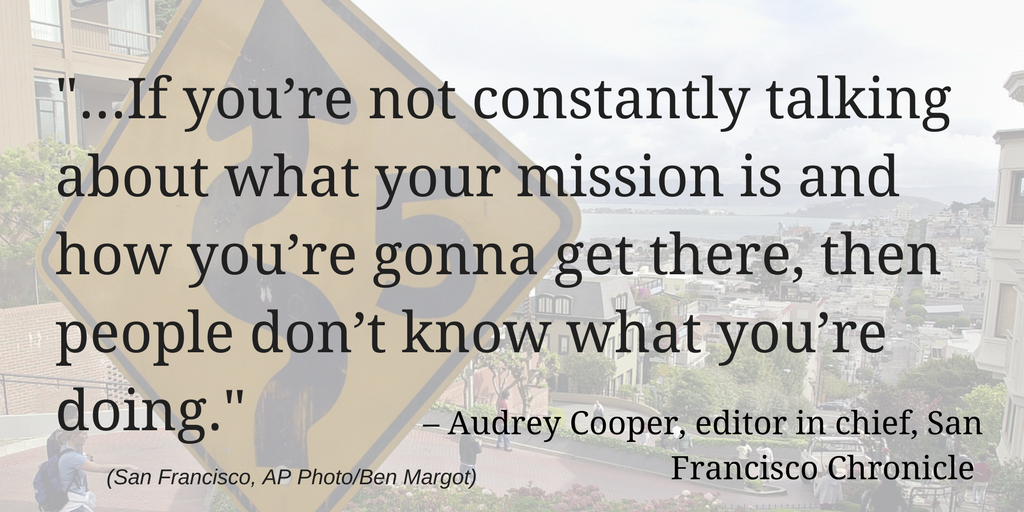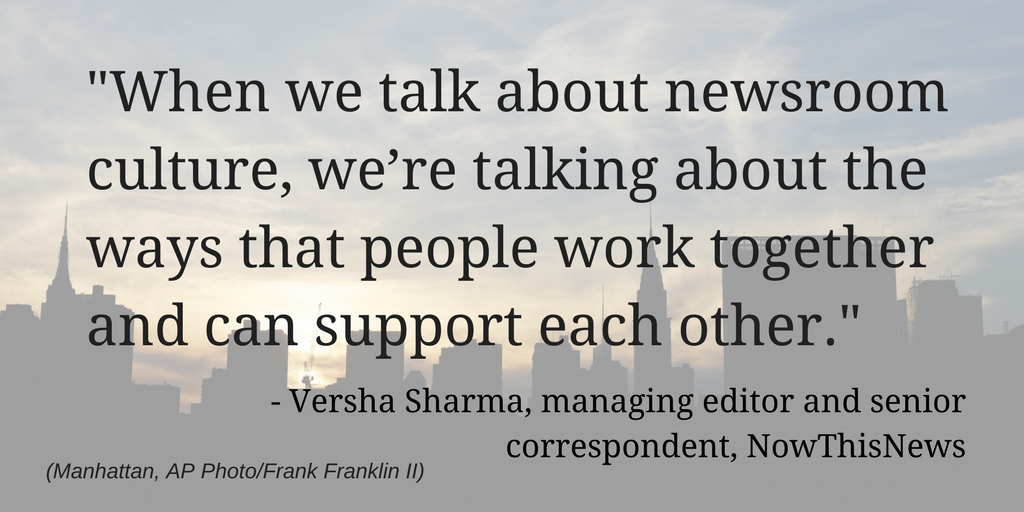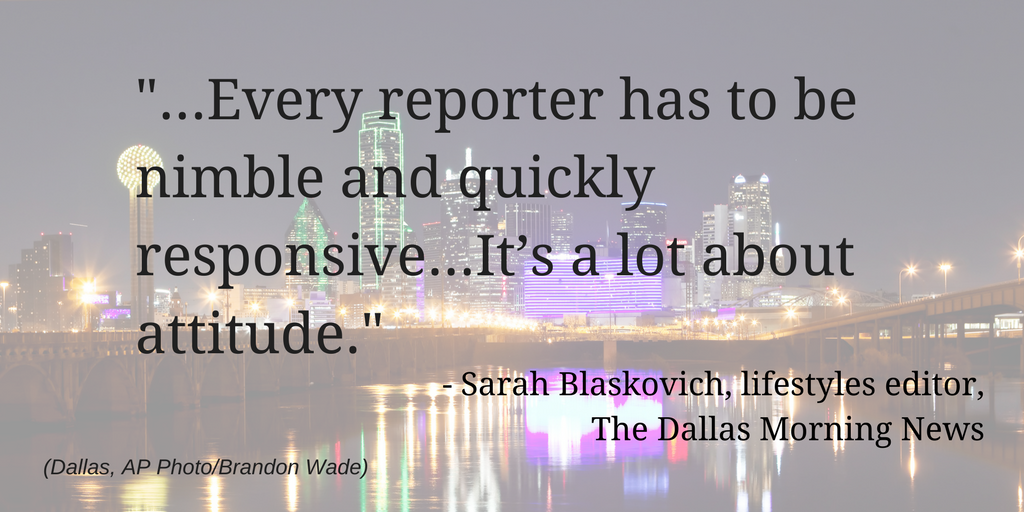This piece originally appeared in Local Edition, our newsletter following the digital transformation of local news. Want to be part of the conversation? You can sign up here.

I know a guy whose workplace wins at birthdays.
We know journalists do goodbye cakes very well, but how about “hey, glad you’re still here” cakes? Most places I’ve worked have team lunches to celebrate birthdays.
But we tend to bring out the food to say goodbye to each other or cope with the most stressful parts of covering the news.
In Atlanta, there’s an ad agency that does things differently.
Todd Slutzky is director of strategic opportunities at Nebo. For birthdays there, people can pick whatever they want to eat, and the company orders enough for everyone to share.
They’ve had lots of different kinds of cakes. They’ve had chicken and biscuits. And this year for his birthday, Todd asked for bagels with smoked salmon and cream cheese.
I agree with those who say you can’t judge a place on perks like ping-pong tables or office beer. But I think this tradition says a few things about Todd’s workplace.
One: They’re recognizing individuals in a way that has little to do with their work identity. Two: They’re giving people a way to share something about themselves with their coworkers. And three: They’re doing it in a very low-key way. It’s not a presentation. It’s not even about work. But the tradition gives people a way to build relationships, which definitely impacts the work.
I asked Todd what he thinks the tradition says about where he works.
“The birthday thing isn’t important,” he told me. “No one thing is.”
Instead, Todd said, it’s the way it all comes together.
“It doesn’t matter how good the benefits are or how much fun the parties are, what matters is how we treat and care for each other. And it starts with the owners. Culture always does. (Be it good or bad.) Good owners/leaders make it and bad ones kill it. Doesn’t matter how many things HR does, or if there’s a party committee if it is all fighting against the corporate culture. Bottom line, we fight for our culture every day. The things we do build together to make a culture that is meaningful for (most) everyone who works here.”
OK, so it’s not about the food. But for my birthday we’re all having movie theater popcorn.
Here are some of the other things we learned this month about workplace culture:

You have to recognize what bad workplace culture looks like before you can start changing it.
Bad workplace culture can show itself through permissiveness to sexual assault and harassment, racism and sexism. But it can show itself in less obvious ways, too.
Look for:
- Lack of motivation.
- Unclear expectations and communication.
- Toxicity.
- No connection to or understanding of your audience.

Here’s the good news: You can do small things that start to impact your newsroom culture.
Try:
- Starting with your team. You might not be able to change how your boss’ boss does things. But what can you work toward within your own team that, if successful, can be replicated? The San Francisco Chronicle’s Audrey Cooper spoke about the importance of sharing and reinforcing the company’s mission. Can your team come up with its own micro mission?
- Attempting things that might not work out. NowThisNews’ Versha Sharma spoke about working in a place that’s not afraid to fail. This is often tough for journalists, but you don’t have to start big. Create a story in a new way. Make a timeline. Organize a small event. “Fail actively.”
- Acknowledging the stuff you can’t change. Librarian Gina Sheridan said last week that she’s aware of the things that are outside her sphere of influence. You can’t change those things. Figure them out and work on the stuff you can.

Agility is not just a word for tech people.
Remember:
- We’ve entered a time when everything about our industry is changing at a pretty regular pace. There is no “done” anymore.
- As The Dallas Morning News’ Sarah Blaskovich put it, “The answer is often yes.” You may not know how to do something, but do you work with someone who does? Will they teach you? What can you teach them?
- It’s worth questioning even the simplest things about how we do what we do, such as where we physically work from, as Poynter columnist Melody Kramer and The New Tropic’s Rebekah Monson both pointed out.
Thanks, everyone, for spending the last five weeks talking about workplace culture. I know it gets a bit fuzzy, but I’ve heard from a lot of you, too, and I agree that this stuff matters.
Next week, we’re starting a new conversation about something that’s indispensable to our work: audiences. I’ll be talking with Ashley Alvarado, the manager of public engagement at the Southern California public radio station KPCC, and Challen Stephens, an editor and reporter at Al.com. We’re going to hear what they’re doing to talk with — not just at — their audiences.
Until then, tell NewsTrain’s Linda Austin what you want to know about digital journalism and how you want to learn it. There are lots of ONA Local events coming up. And speaking of learning something new, check out this free Poynter Webinar on “Understanding racial patterns in police data.”
Oh also, are you going to IRE this week? I’ll be there! Please say hi!







